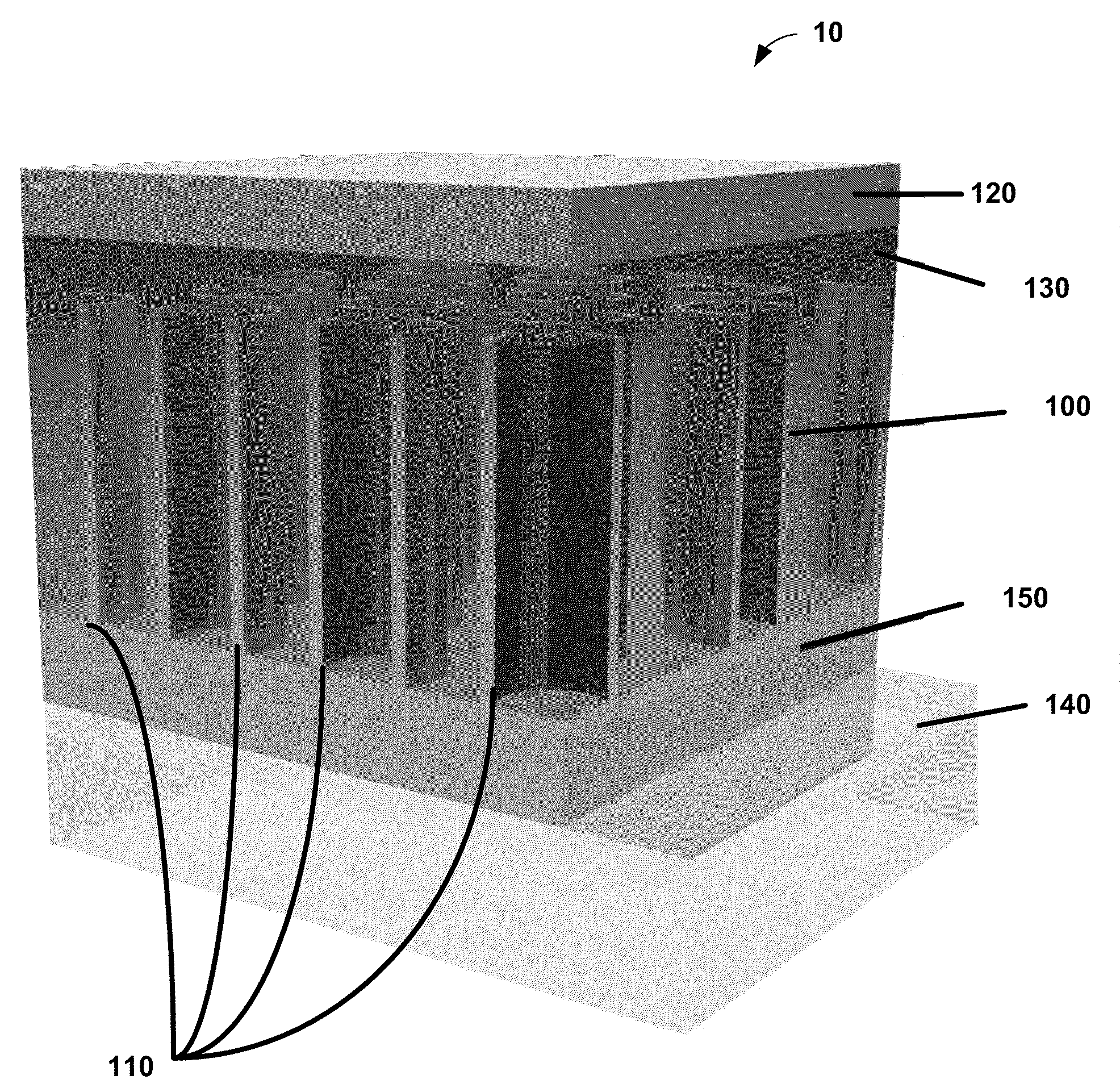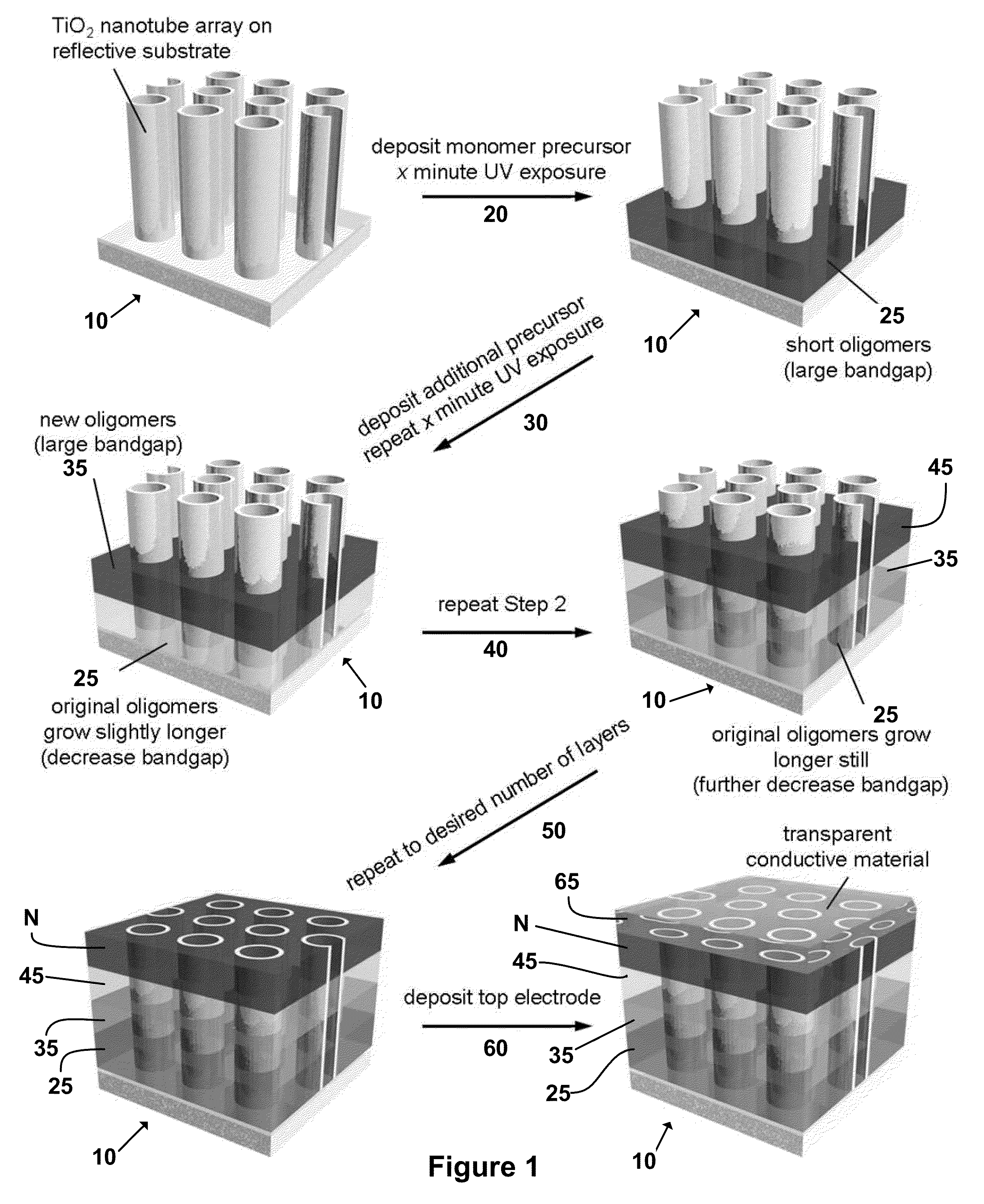Hybrid solar cells via uv-polymerization of polymer precursor
a polymer precursor and hybrid technology, applied in the field of hybrid organicinorganic photovoltaic cell devices, can solve the problems of poor photon absorption efficiency, failure of previous efforts to create a composite of polythiophene and tio/sub>2, and no step in the photon-to-electron conversion process has been optimized, so as to improve the efficiency of all of these parameters, improve the overall performance of the photovoltaic device, and power conversion efficiency of the devi
- Summary
- Abstract
- Description
- Claims
- Application Information
AI Technical Summary
Benefits of technology
Problems solved by technology
Method used
Image
Examples
example
[0038]With reference to FIGS. 1-9, an embodiment of a photovoltaic cell 10 according to the present invention was fabricated as follows. A vertically oriented TiO2 nanotube array 100 was formed on a conductive transparent electrode ITO-coated glass substrate 140. The substrates were cleaned by subsequent 15 minute sonications in the following solvents: sodium-dodecyl sulfonate, DI water, acetone and isopropyl alcohol. A Ti film 150 about 1 μm thick was formed on the ITO-coated glass substrate 140 by sputter deposition. To improve adhesion of the initial layer of the Ti film 150 onto the ITO-coated glass substrate 140, the first 100 nm of the Ti film 150 were grown at a relatively slow deposition rate (0.5 Å / s) and the remainder of the Ti film 150 was grown at 2.3 Å / s.
[0039]The TiO2 nanotube array 100 comprising a plurality of TiO2 nanotubes 110 was formed by potentiostatic anodization of the Ti film 150 in an electrolyte containing 0.27 M NH4F and 5% deionized H2O dissolved in forma...
PUM
| Property | Measurement | Unit |
|---|---|---|
| thickness | aaaaa | aaaaa |
| thickness | aaaaa | aaaaa |
| thickness | aaaaa | aaaaa |
Abstract
Description
Claims
Application Information
 Login to View More
Login to View More - R&D
- Intellectual Property
- Life Sciences
- Materials
- Tech Scout
- Unparalleled Data Quality
- Higher Quality Content
- 60% Fewer Hallucinations
Browse by: Latest US Patents, China's latest patents, Technical Efficacy Thesaurus, Application Domain, Technology Topic, Popular Technical Reports.
© 2025 PatSnap. All rights reserved.Legal|Privacy policy|Modern Slavery Act Transparency Statement|Sitemap|About US| Contact US: help@patsnap.com



